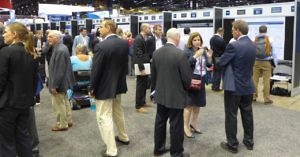AstraZeneca take a punt on immuno-oncology
There can be no doubt that immuno-oncology is a hot topic in cancer research of late with checkpoint inhibitors, immune agonists, immunocytokines, CAR T cells, TILs, TCRs, not forgetting innate immunotherapies. We’ve written extensively about many of these topics, but what about the companies behind them and their strategies?
One thing subscribers tell us they love reading about here on BSB is not only fireside chats with thought leaders, but also interviews behind the scenes with company personnel, be scientists, clinicians or CSOs.
Recently, we’ve posted some interviews with Roche and Genentech scientists/physicians about their IO platform that were well received. Today, it’s the turn of AstraZeneca and MedImmune, who are also developing checkpoint inhibitors and immune agonists against various cancers.
With the anti-PD1 antibodies i.e. Merck’s pembrlizumab (Keytruda) and BMS’s nivolumab (Opdivo) already approved by the FDA, and Roche/Genentech’s atezolizmuab well on the way to filing in advanced urothelial bladder cancer with the announcement this week that the IMvigor 210 trial in relapsed/refractory disease met its primary endpoint, the big question now remains is what’s happening with the fourth element of the quartet? How well is progress coming along there and what is the main focus we can expect in the near future?
 Like most Brits, when AstraZeneca noted back in 2013 that they expect to establish their global R&D hub in Cambridge, I assumed they meant in the Golden Triangle and not Massachusetts. This is a burgeoning area for European biotech research, which is somewhat ironic after the KuDos scientists working on olaparib (Lynparza) moved to Alderley Park in Cheshire with the acquisition and will likely face moving back again!
Like most Brits, when AstraZeneca noted back in 2013 that they expect to establish their global R&D hub in Cambridge, I assumed they meant in the Golden Triangle and not Massachusetts. This is a burgeoning area for European biotech research, which is somewhat ironic after the KuDos scientists working on olaparib (Lynparza) moved to Alderley Park in Cheshire with the acquisition and will likely face moving back again!
At ASCO, we had the pleasure of a chat with Dr Rob Iannone, the head of the AstraZeneca Immuno-oncology development program. The company also published a number of interesting abstracts and posters that were on show in Chicago, as well as a burgeoning pipeline in this area beyond their lead compounds, the anti-PDL1 inhibitor, durvalumab (MEDI4736) and tremelimumab (anti-CTLA4).
To learn more about these sentiments and insights, subscribers can log-in or you can purchase access to BSB Premium Content below…
This content is restricted to subscribers
 At ASCO this year, there was a decent crop of new combination data in both posters and oral sessions looking at various PARP inhibitors in breast or high grade serous ovarian cancer with either chemotherapy (typically platinum-based) or targeted therapies such as PI3K (BKM120) or VEGF (cediranib).
At ASCO this year, there was a decent crop of new combination data in both posters and oral sessions looking at various PARP inhibitors in breast or high grade serous ovarian cancer with either chemotherapy (typically platinum-based) or targeted therapies such as PI3K (BKM120) or VEGF (cediranib).